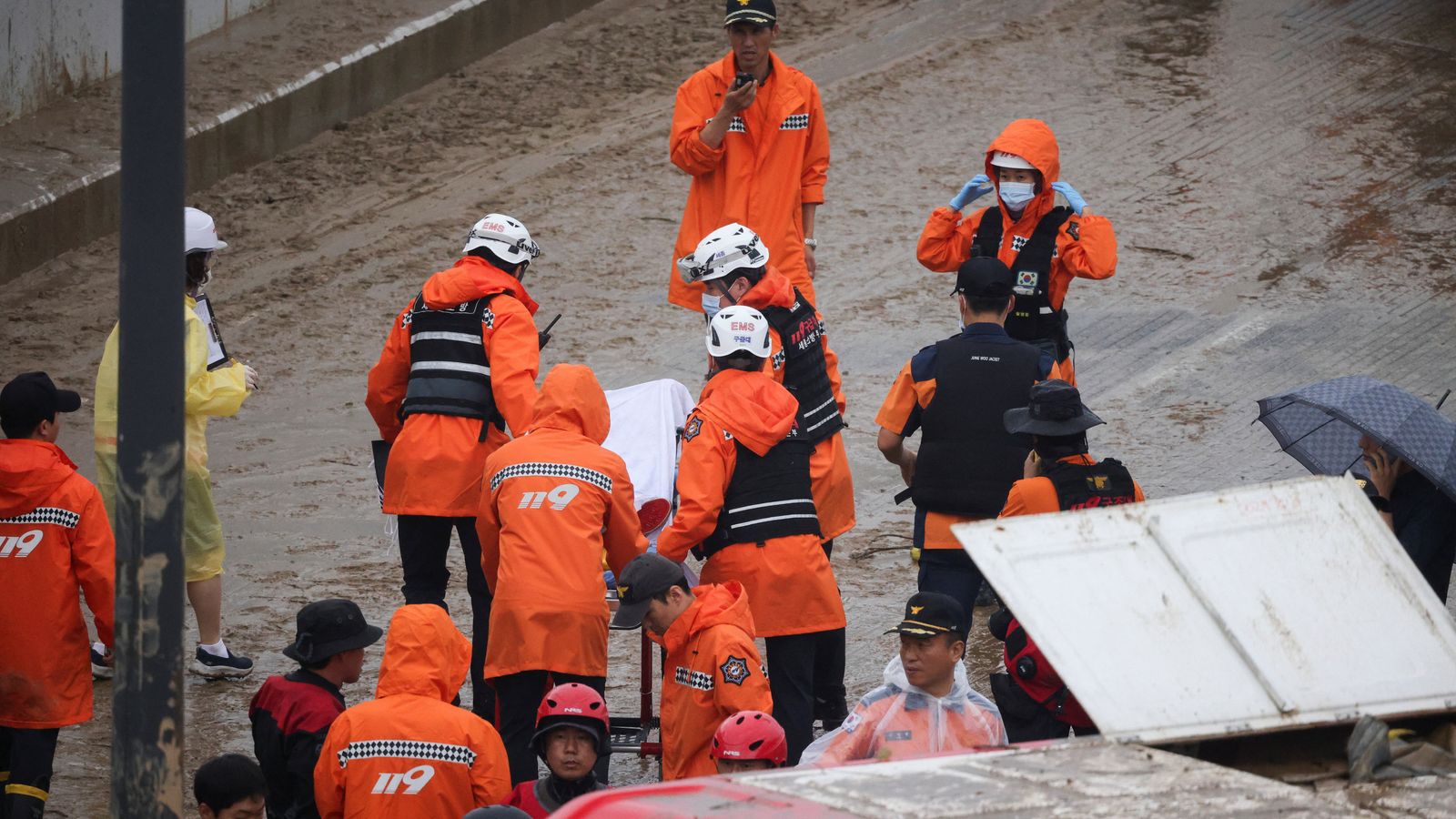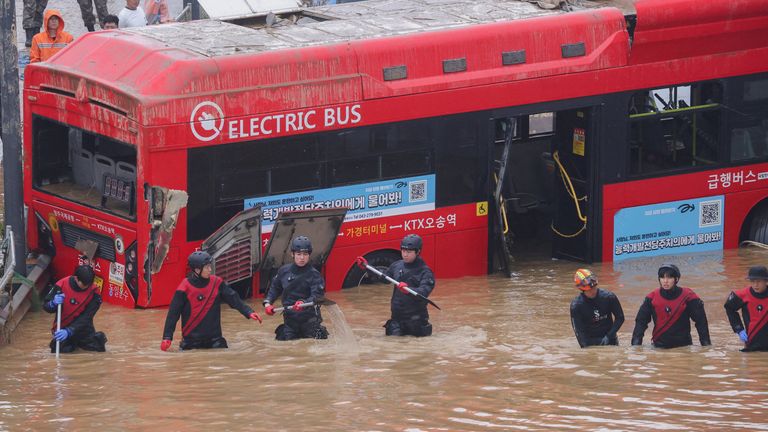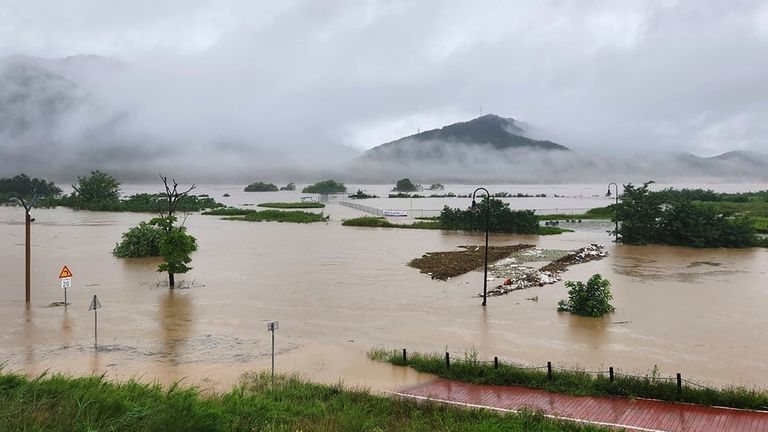South Korea: At least 33 killed after torrential rain unleashes flooding and landslides


At least 33 people have died after torrential downpours triggered deadly flash floods and landslides in South Korea.
The country has been hit by heavy rainfall since 9 July, which has intensified in the past three days and is expected to continue in some regions until Sunday.
Rescue workers have so far pulled seven bodies from a flooded tunnel where around 15 vehicles were trapped in muddy water.
Nearly 400 rescue workers, including divers, were searching the tunnel in the central city of Cheongju, where the vehicles, including a bus, were swamped by a flash flood Saturday evening, Seo Jeong-il, chief of the city’s fire department, said in a briefing.

Photos and video from the scene showed rescue workers establishing a perimeter and pumping brown water out of the tunnel as divers used rubber boats to move in and out of the area.
Yang Chan-mo, an official from the North Chungcheong provincial fire department, said it could take several hours to pump out all the water from the tunnel, which was still filled with 4 to 5 meters (13 to 16.4 feet) of water dense with mud and other debris.

Workers were proceeding slowly with the work to prevent any victims or survivors from being swept out, Yang said.
Nine survivors were rescued from the tunnel and 11 others were believed to be missing based on reports by families or others, but the exact number of passengers trapped in vehicles wasn’t immediately clear, Seo said.
Thousands are being evacuated after a dam in North Chungcheong province came perilously close to overflowing on Saturday morning.
Advertisement


As of 9am local time, more than 2,700 tonnes of water was flowing into Goesan Dam – the maximum amount it can discharge.
The 22 fatalities were reported on Friday and Saturday, all in the central and southeastern regions, the Ministry of the Interior and Safety said in a report.
Landslides claimed the lives of five people on Saturday, burying houses in two central towns, the ministry said, in an earlier statement.
Two people died on Friday in a building collapse caused by landslides in the central city of Nonsan.
The report said torrential rains have also left 14 people missing since Tuesday, and 13 others injured since Thursday.
However, the latest ministry report didn’t explain the cause of deaths for the additional fatalities.
More than 1,500 people have been forced to flee their homes while thousands more have been deprived of electricity.
Read more:
Europe heatwave – latest: Tourists stretchered away and major attraction shut down
Why is Europe being hit by Cerberus heatwave and when will it end?
A train in the North Chungcheong province was derailed by a landslide, which hurled debris on the rail tracks, according to the transport ministry.
A train engineer was injured but there were no passengers on board during the incident on Thursday.
Train operator Korea Railroad Corp announced it was cancelling all slow trains and bullet trains, with some services delayed due to ongoing safety fears.
South Korea’s Prime Minister, Han Duck-soo, has called on the military to assist in the rescue operation by working with government officials to mobilise equipment and manpower.
The incidents follow the death of at least eight people after record rainfall pounded the South Korean capital and surrounding areas in August last year, leaving 14 injured.
More than 100 homes were evacuated to temporary shelters to avoid floodwaters, as the downpours transformed the streets of Seoul’s usually bustling Gangnam district into rivers.
More than 5.5 inches of rain fell per hour (14cm per hour) at one stage – the highest hourly downpour measured in the capital since 1942.